Published by Drum in Nigeria and later also Kenya and Ghana in the early 60s, African Film was just one of the many photo comics or “look books” that flooded English-speaking West Africa in the early post colonial era. Catering to the new urban youth, the series featured the mythical persona of Lance Spearman, a.k.a. “The Spear,” a black James Bond-like crime fighter as the central character.
In contrast to the racist stereotype of the uncivilised, uneducated, spear-carrying cannibal, or the eroticised “noble savage” that characterised the depictions of Africans in most Western comic books from the time, Spearman was sharp, stylish and sophisticated. Combining re-appropriated Western references with a distinctly African cultural identity, he reflected a newly defined black Atlantic modernity. Here was a comic book hero that presented a potential critique of colonialism, as well as a significant variation in how the genre classically figured normality and otherness.
While the series was criticised for its sometimes stereotyped portrayals of blackness and masculinity, it none the less had a lasting influence in fostering postcolonial pride and identity. Its combination of extreme (often cartoon-like) violence, with pastiches of early Hollywood melodramas, dashes of romance and glamour – via the street and touches of black nationalism preceded the Blaxploitation explosion in American cinemas in the 70s and its use of inventive DIY tactics to overcome budget constraints (Spearman’s trademark Corvette Stingray was often a picture of a dinky-toy) had a lasting influence on the Nollywood industry.
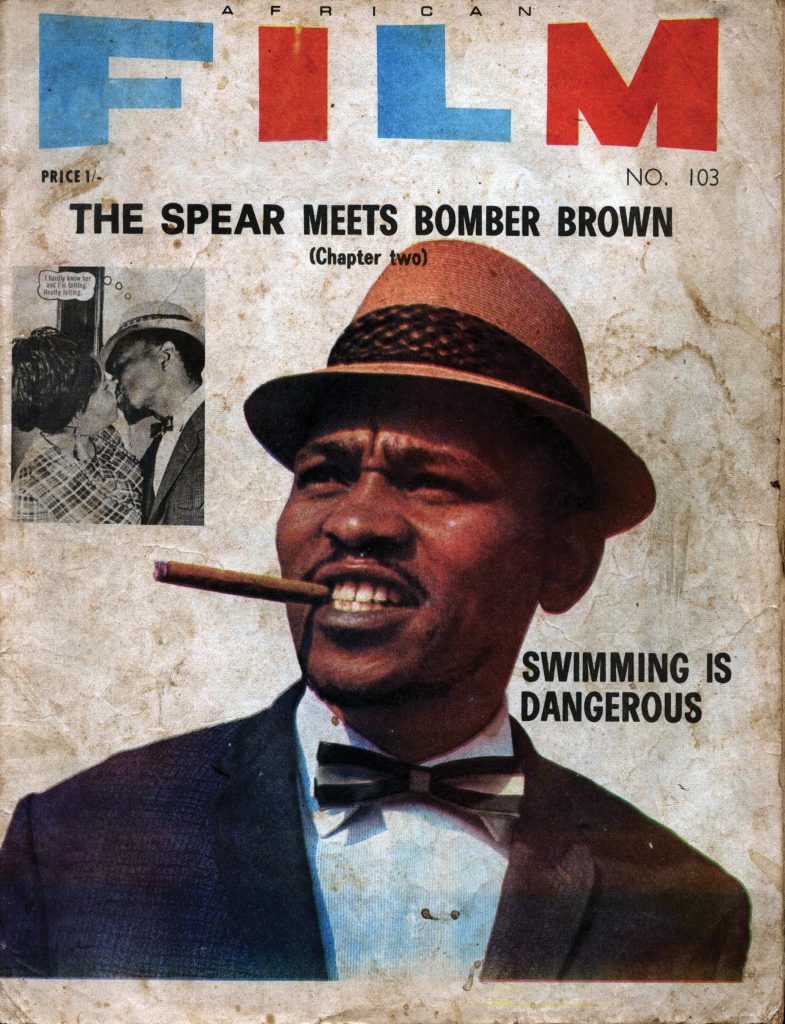
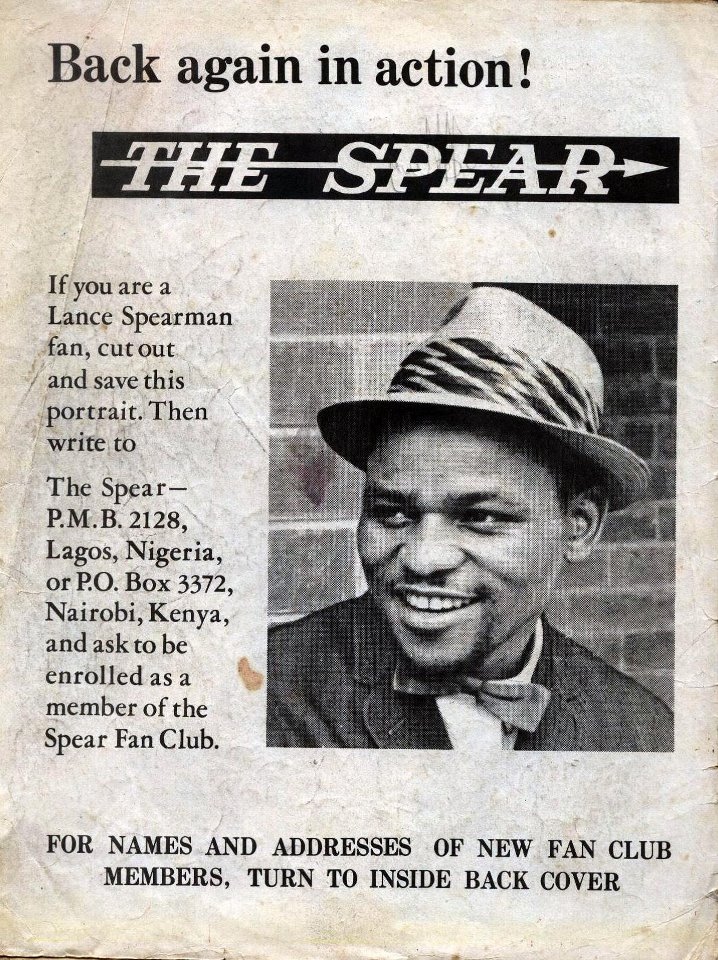
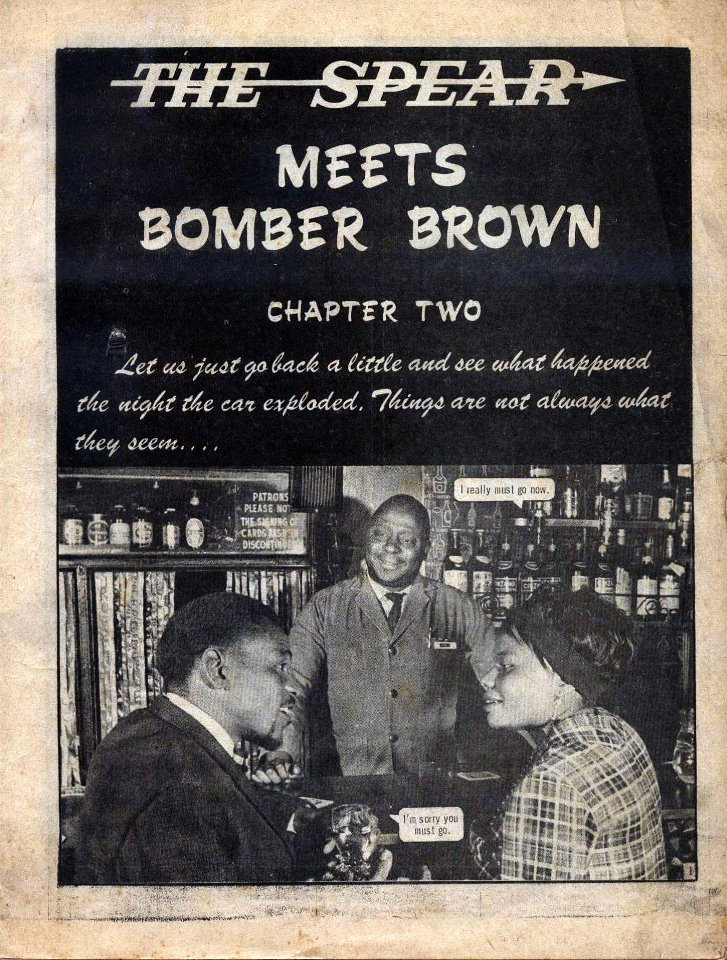
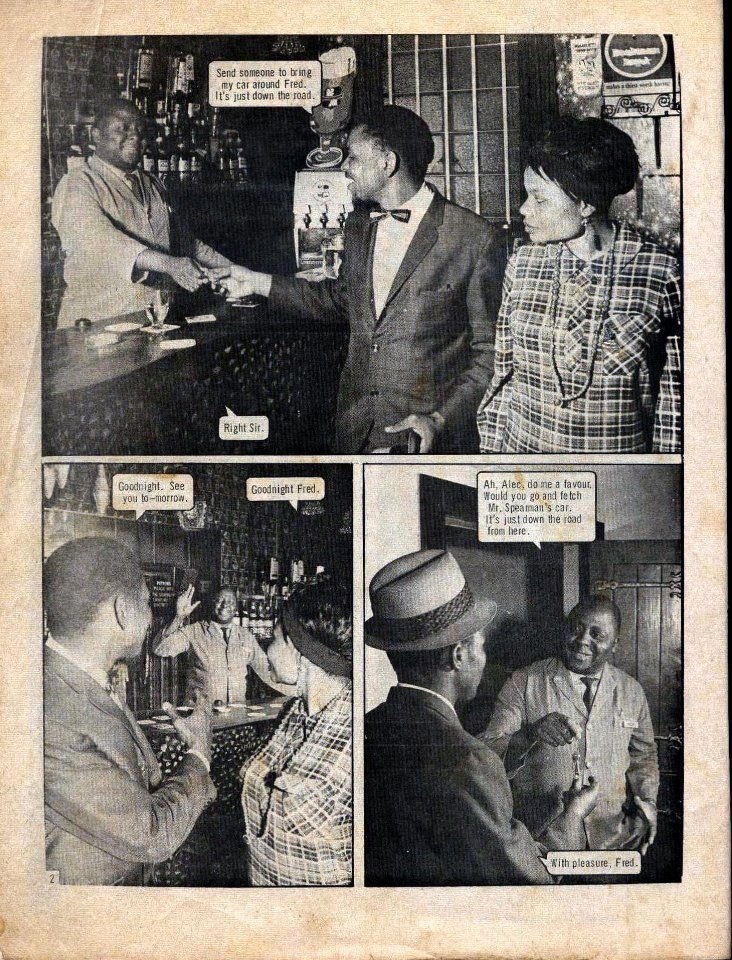
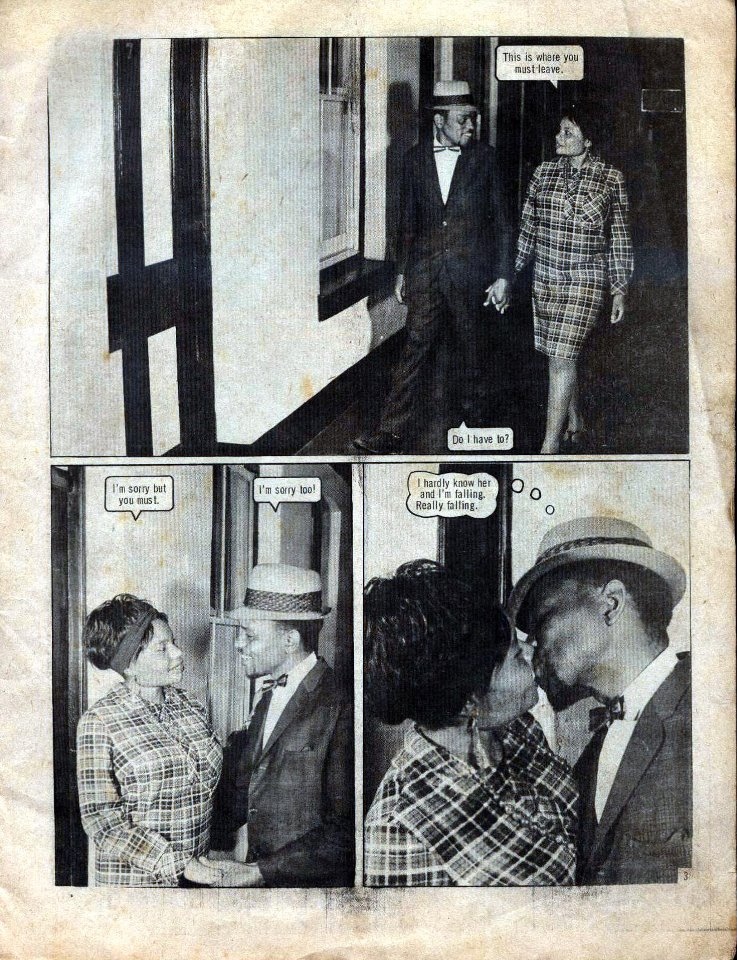
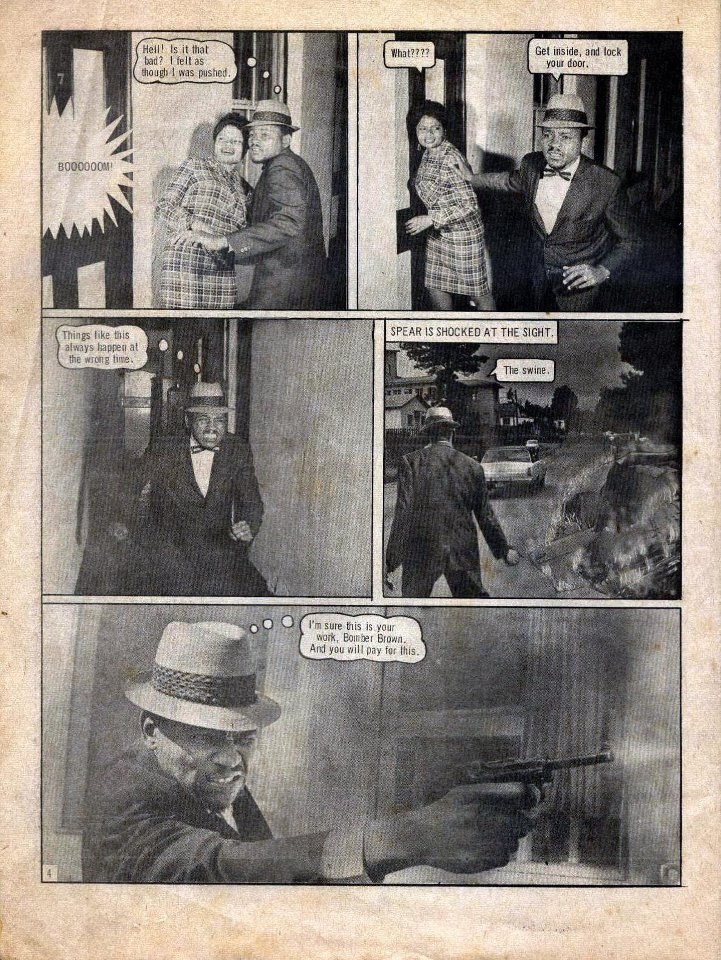
Into this culturally colonized milieu came a new comic published by Drum Publications called African Film featuring Lance Spearman, a raffish and nattily-dressed black super cop with an ever-present Panama hat. And we all instantly fell deeply in love with him. No one forced Spearman on us. For the first time, we had a comic hero who was actually black like us.
Black Like Us by Tunde Giwa
Spearman… Lance Spearman – the name synonymous with the intrepid hero of the photo-comic staple, African Film, started by the publisher of South Africa’s Drum Magazine, produced by fledgling writers and read voraciously by 1970s Nigerian schoolboys, including Uzor Maxim Uzoatu, who dreamed of wars and victories other than those around them.
THE IMPOSSIBLE DEATH OF AN AFRICAN CRIME BUSTER by Uzor Maxim Uzoatu
Traduction Française Par Scarlett Antoniou
Edité par Drum au Nigéria et également plus tard au Kenya et Ghana dans les années 60, African Film était juste une des nombreuses bandes dessinées photo ou “livres à regarder” qui a envahi l’ouest de l’Afrique anglophone durant le début de la période postcoloniale. S’adressant à la nouvelle jeunesse urbaine, les séries avaient pour vedette le personnage mythique de Lance Spearman, a.k.a. “The Spear” (La Lance), un lutteur noir contre les crimes ressemblant à James Bond, comme caractère principal.
En contraste avec le stéréotype raciste du cannibale porteur de lance barbare et non instruit, ou le “noble sauvage” érotiques qui caractérisaient les représentations des africains dans la plupart des livres comiques occidentaux du temps, Spearman était tranchant, élégant et sophistiqué. Allié aux références occidentales de nouveau appropriées avec l’identité culturelle distinctement africaine, il reflétait une modernité atlantique noire nouvellement définie. C’était là un héro de livre comique qui présentait une critique potentielle du colonialisme ainsi qu’une variation considérable dans la manière avec laquelle le tableau de genre illustrait classiquement la normalité et l’ensemble des autres.
Tandis que les séries étaient critiquées pour ses portraits parfois stéréotypes de la couleur noire et de la masculinité, il a eu cependant une influence de longue durée dans la manière d’encourager l’identité et la fierté postcoloniales. Son mélange d’extrême violence (souvent comme des dessins animés), avec des pastiches d’anciens mélodrames Hollywoodiens, des moments de romance et de séductions à travers la rue et les touches de nationalisme noir, précédait l’explosion du ‘Blaxploitation’ (exploitation des noirs) dans les cinémas américains des années 70 et son utilisation de tactiques inventives faites maison pour surmonter les contraintes de budget (la marque déposée de Spearman Corvette Stingray était souvent l’image d’un jouet mignon) ont eu une influence de longue durée sur l’industrie Nollywood.
FAMILY TREE
- Boom featuring Fearless Fang
- The Stranger
- Sadness & Joy
RE/SOURCES
- Nwachukwu Frank Ukadike. Black African Cinema, University of California Press, 1994.
- Photo comics discussion on Naijarules
- Comic Book Resources
- “Tangazo kwa wenye magazeti ya Lance Spearman”, Swahili Times, November 05, 2007
- Black Like Us – An Essay by Tunde Giwa
